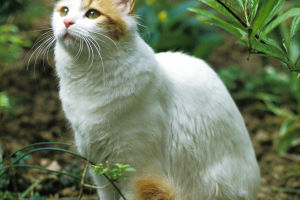The red panda belongs to the family Microtusidae and the genus Microtus.
Both males and females look alike, and there is no visible difference in size or appearance between the genders. Their shape is similar to that of a cat, but they are stockier, with reddish-brown fur covering their bodies.
They have a round face, short muzzles, and white patches on their cheeks. Their ears are large, erect, and pointed forward. Their limbs are thick and short, with blackish-brown fur. Their long and fluffy tail has 12 rings alternating in shades of red and dark brown. The tip of the tail is dark brown and cannot wrap around objects, and it bears dark and light rings.
Red pandas prefer temperate climates and can be found in deciduous and coniferous forests at elevations between 2500 and 4800 meters. They dwell in large tree caves, stone caves, and rock crevices. They are primarily active during the morning and evening when they come out to feed and move around.
During the day, they mostly sleep in the shade of caves or large trees. Adult red pandas rarely interact outside of the mating season. They feed on berries, flowers, bird eggs, bamboo leaves, and small leaves of other plants. Bamboo leaves are their primary food source.
They grasp food with their front paws and deliver it to their mouth while sitting, standing, or lying on their back. Food caught in this manner is inserted into the side of their mouth, clipped, and then chewed extensively before being swallowed.
Red pandas can be found in northern Burma, Nepal, the Sikkim region of India, and the Himalayan Mountains in the western Sichuan and Yunnan regions of China at altitudes between 2,200 to 4,800 meters.
They spend their days hidden in rock or tree caves and come out to feed in the morning and evening, preferring to move in small groups of five. Red pandas enjoy drinking water and often hang out near streams. They have thick fur on the soles of their feet, making them suitable for walking on slippery ground or rocks under dense forests.
Red pandas walk with their front feet bent inward, similar to the posture of bears, giving them a distinctive waddling gait. They are usually docile and rarely make a sound, but when angered, they emit a cat-like "hissing" sound and spit. When really angry, they make a short, low grunt.
Red pandas are excellent climbers and can often climb high up into thin branches to rest or hide from predators. Their thick fur on the soles of their feet makes them well-suited for walking on wet, mossy ground under the forest or on rocks. When walking, they have a wobbly gait similar to that of a bear.
Red pandas move slowly and are generally tame, rarely barking. Their hearing and vision are dull, and their sense of smell is not particularly sensitive. They are usually active alone or in pairs or small groups. When it rains or snows, they often take shelter in rock crevices or deep in the shade of large trees.
Red pandas enjoy eating bamboo shoots, arrow bamboo leaves, and moss, as well as various wild fruits, leaves, and insects, especially those with a sweet taste.
Like raccoons, they are known for their cleanliness and will defecate in designated areas. After eating, they have a habit of rubbing their mouths and faces with their paws or washing the sides of their mouths with their tongues.


